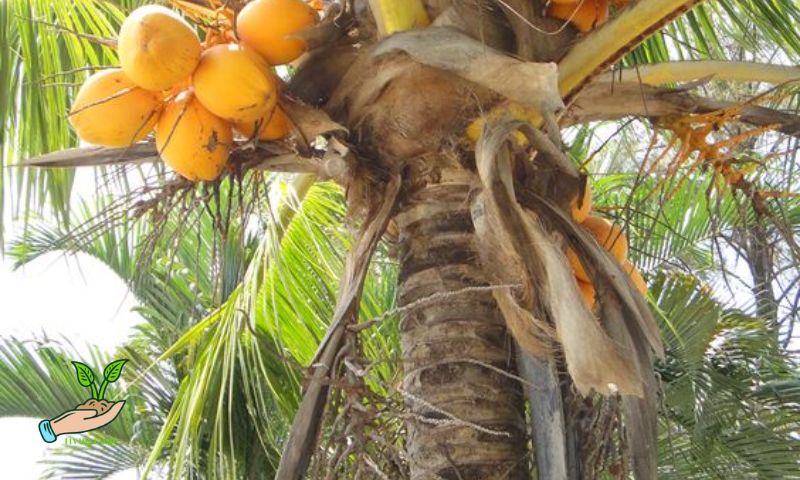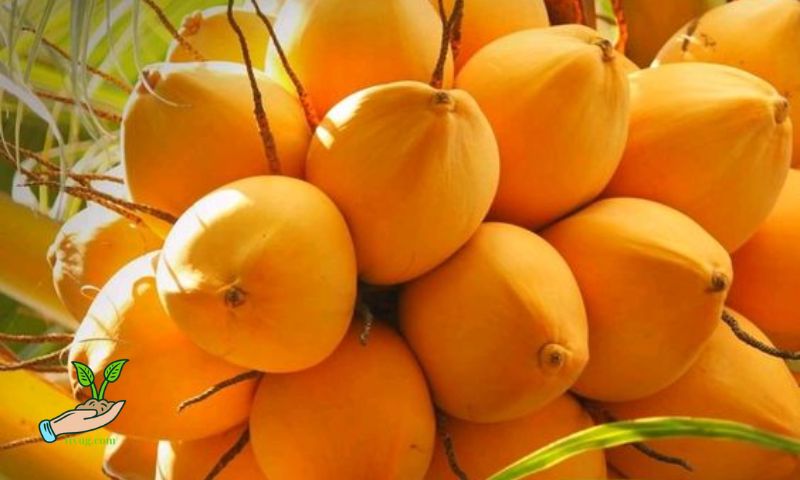Coconuts are celebrated worldwide for their versatility and nutritional value. Among the various types of coconuts, the Red Siam Coconut stands out due to its distinctive appearance and beneficial properties. This article explores the unique aspects of the Red Siam Coconut, covering its nutritional benefits, culinary uses, agricultural significance, economic impact, cultural relevance, and more.
What is Red Siam Coconut?

Definition
The Red Siam Coconut, also known scientifically as Cocos nucifera, is a variety of coconut known for its vibrant reddish-brown husk. Unlike the common green or brown coconuts, the Red Siam Coconut has a unique coloration that makes it easily identifiable. It is primarily grown in tropical regions where the climate supports its growth.
Unique Characteristics
The Red Siam Coconut is not just visually distinct but also has unique features that set it apart from other coconut varieties. Its flesh is exceptionally tender and sweet, making it a favorite for both culinary and beverage uses. The water inside the Red Siam Coconut is refreshingly sweet and packed with essential nutrients.
Nutritional Benefits
Vitamins and Minerals
The Red Siam Coconut is a nutritional powerhouse. It is rich in vitamins such as vitamin C, vitamin B1 (thiamine), and vitamin B3 (niacin). It also contains essential minerals like potassium, magnesium, calcium, and phosphorus. These nutrients play a crucial role in maintaining overall health and well-being.
Health Benefits
The nutritional profile of the Red Siam Coconut offers numerous health benefits. Coconut water is an excellent source of hydration, as it contains electrolytes that help replenish the body’s fluids. The antioxidants present in the coconut help combat oxidative stress and support the immune system. Additionally, the fiber content aids in digestion and promotes a healthy metabolism.
Culinary Uses

Traditional Dishes
In many tropical regions, the Red Siam Coconut is a staple ingredient in traditional dishes. Its sweet and tender flesh is often used in desserts, curries, and rice dishes. For instance, in Thailand, the flesh is grated and used in coconut milk production, which is a key ingredient in many traditional Thai dishes.
Modern Recipes
Modern culinary practices have embraced the Red Siam Coconut for its versatility. It is commonly used in smoothies, shakes, and health drinks due to its sweet taste and nutritional benefits. The coconut water can be used as a natural sports drink, and the flesh can be incorporated into energy bars, desserts, and even savory dishes.
Agricultural Aspects
Cultivation
The cultivation of Red Siam Coconut requires a tropical climate with plenty of sunlight and well-drained soil. These coconuts thrive in areas with high humidity and regular rainfall. Farmers employ specific farming practices to ensure the healthy growth of the coconut palms, including proper spacing, regular watering, and organic fertilization.
Harvesting
Harvesting Red Siam Coconuts is a skill-intensive process that requires careful handling to avoid damaging the coconuts. The coconuts are typically harvested when they reach maturity, which is indicated by the color change of the husk. The harvesting season usually spans several months, ensuring a steady supply of fresh coconuts.
Economic Importance
Market Demand
The demand for Red Siam Coconut is growing globally due to its unique taste and health benefits. It is particularly popular in health-conscious markets and among culinary enthusiasts who value its distinct flavor. The increasing awareness of its nutritional benefits has also contributed to its rising popularity.
Trade and Export
Red Siam Coconut is a significant export product for many tropical countries. The trade routes for this coconut variety extend to major markets in North America, Europe, and Asia. The economic impact of the Red Siam Coconut trade is substantial, providing income for local farmers and contributing to the economy of the producing regions.
Cultural Significance

Traditions and Festivals
In many cultures, the Red Siam Coconut holds a special place in traditional practices and festivals. It is often used in religious ceremonies, weddings, and other cultural celebrations. The coconut is seen as a symbol of purity, prosperity, and fertility in various traditions.
Historical Background
The historical significance of Red Siam Coconut dates back centuries, with its use documented in ancient texts and traditional folklore. It has been an integral part of the diet and culture in many tropical regions, and its cultivation techniques have been passed down through generations.
Sustainability and Environmental Impact
Sustainable Farming Practices
Sustainable farming practices are essential for the cultivation of Red Siam Coconut. Farmers are increasingly adopting eco-friendly methods such as organic farming, crop rotation, and the use of natural fertilizers. These practices help maintain soil health and ensure the long-term viability of coconut plantations.
Environmental Impact
The cultivation of Red Siam Coconut has a relatively low environmental footprint. The coconut palms contribute to maintaining biodiversity in the regions where they are grown. Efforts to minimize the use of chemical pesticides and fertilizers further reduce the environmental impact of coconut farming.
Buying and Storage Tips
Purchasing Guide
When buying Red Siam Coconut, it is essential to select coconuts that are free from cracks and have a firm husk. Fresh coconuts should feel heavy for their size, indicating a high water content. These coconuts can be found in specialty markets and online stores that specialize in tropical fruits.
Storage Instructions
Proper storage of Red Siam Coconut is crucial to maintain its freshness and nutritional value. The coconuts should be stored in a cool, dry place away from direct sunlight. Once opened, the flesh and water should be consumed within a few days or stored in the refrigerator to prolong their shelf life.
Conclusion
The Red Siam Coconut is a unique and valuable variety of coconut with numerous health benefits and culinary uses. Its rich nutritional profile, combined with its sweet taste and tender flesh, makes it a favorite among consumers worldwide. The coconut’s economic significance, cultural relevance, and sustainable farming practices further enhance its appeal.

